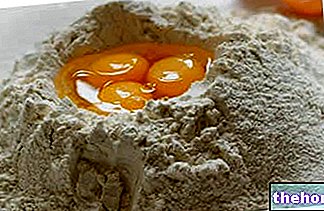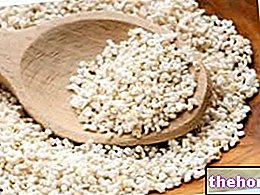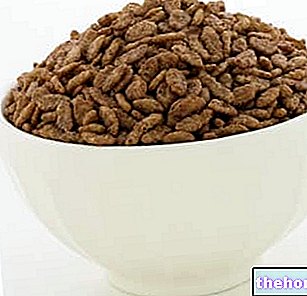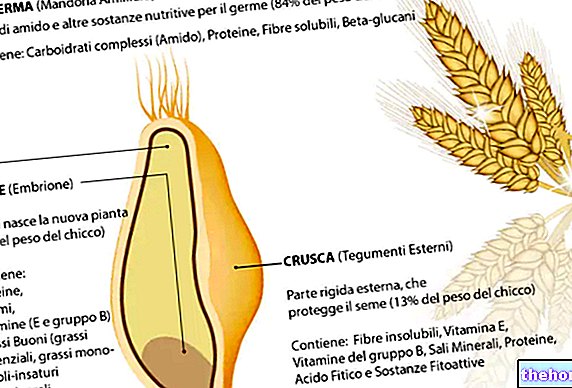Generality
The carasau bread is a Traditional Italian Agri-food Product (PAT), which has its roots in the Sardinia region (province of Nuoro). It is a bakery food made from durum wheat, which falls within the group of bread and the like, even if - due to its characteristic shape - it looks much more like a sort of "wafer"; not surprisingly, pane carasau is also known as "music paper".

From a gastronomic point of view, pane carasau brilliantly replaces classic bread. On the other hand, it does not contain crumbs, which is why it has a greater shelf life; it is therefore an excellent travel food.
Description
Carasau bread has the appearance of a real crunchy wafer; it is made up of circular sheets (as anticipated, similar to large wafers), totally free of crumb, no more than 40cm wide and with an unquantifiable thickness. The color is golden , the characteristic flavor and aroma strongly recalls the hints of cereals, granary and oven wood.
The raw materials of carasau bread are: semolina, water, yeast and salt from the Sardinia region; we will analyze them in more detail in the following paragraph.
Carasau Bread Production: System, Equipment and Premises
First of all, we mention the QUALITY of the necessary raw materials: the flour for carasau bread is a re-ground durum wheat semolina, the latter grown exclusively within the Sardinia region; the enzymes are natural and not of an artificial nature (such as chemical yeast); the salt is of marine type (therefore rich in iodine) and of indigenous origin; finally, the water is totally de-chlorinated.
Carasau bread must be produced by scrupulously respecting 4 fundamental steps. The 4 processing phases can be summarized as follows:
- Mix of ingredients; the mixture must be worked until an elastic and smooth dough is obtained.
- 2 leavening; the first involves the dough and lasts about 30 ". Subsequently, circular sheets are obtained which undergo a "further leavening on special sheets of linen, cotton or hemp, for about two hours.
- Cooking; takes place in the oven, which must reach a temperature of 450-550 ° C; the discs are placed inside the cooking tool and instantly swell like a sort of "balloon". This must be removed immediately and cut across to obtain 2 discs to be stacked one on top of the other (in slight compression).
- Carasatura (biscuit); it is the most characteristic phase. It consists of a second baking of the discs to brown them and biscuits. They will then be extracted and further stacked (again with a slight compression) making sure that the arrangement does not cause the discs to break in the packaging.
Nowadays, even pane carasau (despite being a traditional food) is produced with a certain level of automation. The initial compound requires the use of a mixer and the discs are obtained with the action of a sheeter. Packaging takes place in sealing food containers.
In compliance with the production disciplinary, the processing and conditioning operations must be carried out in specific plants located in the regional territory. The automation to which we have referred is aimed at guaranteeing the best quality and organoleptic standard; the structures used must be prepared for the right exchange of air, lighting, flooring and hygienic-sanitary adjustments.
Gastronomy and Nutritional Characteristics of Carasau Bread
Carasau bread can be consumed in many ways and the recipes that include it are truly countless. Dry consumption is particularly pleasant, thanks to the toasted consistency; there are also small elaborations such as pane guttìau (anointing with extra virgin olive oil, salting and reheating in the oven), and more complex formulas such as pane frattàu (similar to a lasagna).
The nutritional intake of pane carasau is not specified in any database of research institutes for food and beverages, but it can be said that it does not differ much from that of dry food pasta. Readers will wonder why it should be more similar to pasta. than to classic bread: the answer is not complicated! First of all, pane carasau does NOT contain seasoning fats, consequently the lipid contribution is completely marginal. Secondly, as we have already said, this food is passed back in the oven and has NO crumb; this means that the water content is reduced to a minimum. Ultimately, carasau bread provides about 20% more kcal than white bread with crumbs, but these calories come almost exclusively from complex carbohydrates; the lipids are insignificant and the proteins of little entity. All the other nutrients of carasau bread (minerals and vitamins) are almost comparable (but slightly higher) to those of traditional bread.
Carasau bread is a food that contains gluten and is not suitable for the celiac's diet; moreover, excessive portions of this product are NOT RECOMMENDED in case of overweight, type 2 diabetes mellitus and hypertriglyceridemia.
ATTENTION! There are, or rather "have existed", different types of carasau bread compared to the traditional one. The product described so far is the refined one, which means that in the past it was the baked product destined for the higher social classes. On the contrary, the less privileged classes ate carasau bread made with barley and cruschello flour.
Carasau bread pie with stracchino courgettes and Asiago
Problems with playing the video? Reload the video from youtube.
- Go to the Video Page
- Go to the Video Recipes Section
- Watch the video on youtube
Reference sites:
- Traditional product of Sardinia - Pane Carasau - http://www.sardegnaagricoltura.it/




























